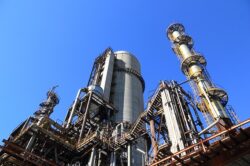As the global shift towards green hydrogen continues, Europe doubles down on its decarbonisation effort. Europe could devote 40,000 km (24,800 miles) of natural gas pipelines to hydrogen by 2040 once production and imports of the alternative fuel take off, transmission systems operators (TSOs) said on Tuesday.
The hypothetical European hydrogen backbone scenario envisages how elements of 2020 “green” hydrogen strategies at European Union and national level will fit together, said speakers during an industry webcast involving 23 grid operators from 21 countries.
On the road to decarbonisation, European policymakers aim for the region to produce, transport and market green hydrogen from renewable energy via electrolysis to replace “grey” hydrogen from gas, and to substitute oil products across manufacturing industries and in heating and transport.
“We have found that it is technically possible and economically feasible to use the existing gas infrastructure to create this hydrogen backbone,” chief coordinator Daniel Muthmann said during the webcast.
“It helps to integrate large amounts of renewable energy and it creates the basis for a liquid, cross-border market for renewable and low-carbon hydrogen,” said Muthmann, who is head of corporate development, strategy, policy and communication at Open Grid Europe (OGE), a leading grid operator.
The TSOs estimate related costs at between 43 billion euros ($51.30 billion) and 81 billion euros.
Some 69% of the proposed hydrogen network could consist of repurposed natural gas pipelines, they said.
The remaining 31% would be needed to connect future hydrogen consumers in countries with currently few gas grids, but foreseeable high hydrogen demand and production.
The TSO report said transportation costs could be 0.11-0.21 euros per kg of hydrogen, which it estimated at a future production cost of 1-2 euros per kg.
Sceptics of the hydrogen drive argue that natural gas is not emissions-free and green hydrogen still uncompetitive.

